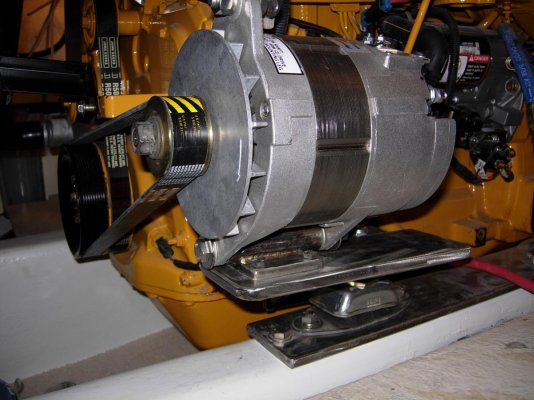Absolutely kudos again to the entertainer formerly known as N4061...lol
So often people ask what boat they should get. Just as you did, they have to evaluate their use. I loved your discussion of the pilothouse. We like things to flow, a sense of openness but also want space and equipment. We don't want to be isolated from others so, as you wanted, we must have good seating near any helm.
I still don't know if I could go with no side deck, but I would consider it after reading you and others. I said "I'd never want a boat without side decks." But I have a sport boat with none. It has no decks built for walking and standing at all. Definitely not for use for docking. So, in thinking it's so bad for a cruising boat, I have to rethink. We continue to reexamine what is important to us. Reading your thoughts and processes causes us to do so. I knew nothing about Helmsman prior to this and had no choice after reading your posts and others but to go study their site and find out whatever I could. I learned something and found myself impressed.
Baseball has Sabermetrics. Is there a term for the obsessive study of boats, wanting to look at every brand, every model, and know as much about it as one can? Whatever it is, I declare myself guilty and my wife who finds that funny still is always looking with me and I don't force her to do so. Pretty obvious no one forces her to do anything. lol
So to read this story is absolutely and total pleasure for us.
So often people ask what boat they should get. Just as you did, they have to evaluate their use. I loved your discussion of the pilothouse. We like things to flow, a sense of openness but also want space and equipment. We don't want to be isolated from others so, as you wanted, we must have good seating near any helm.
I still don't know if I could go with no side deck, but I would consider it after reading you and others. I said "I'd never want a boat without side decks." But I have a sport boat with none. It has no decks built for walking and standing at all. Definitely not for use for docking. So, in thinking it's so bad for a cruising boat, I have to rethink. We continue to reexamine what is important to us. Reading your thoughts and processes causes us to do so. I knew nothing about Helmsman prior to this and had no choice after reading your posts and others but to go study their site and find out whatever I could. I learned something and found myself impressed.
Baseball has Sabermetrics. Is there a term for the obsessive study of boats, wanting to look at every brand, every model, and know as much about it as one can? Whatever it is, I declare myself guilty and my wife who finds that funny still is always looking with me and I don't force her to do so. Pretty obvious no one forces her to do anything. lol
So to read this story is absolutely and total pleasure for us.



